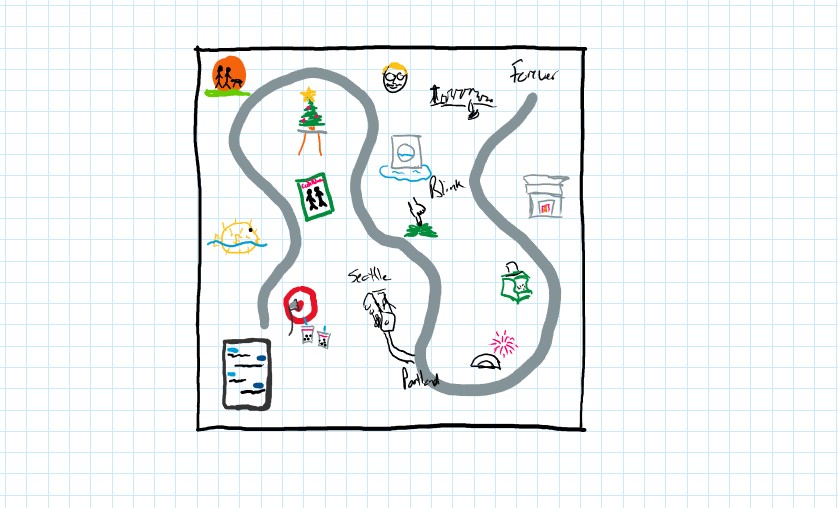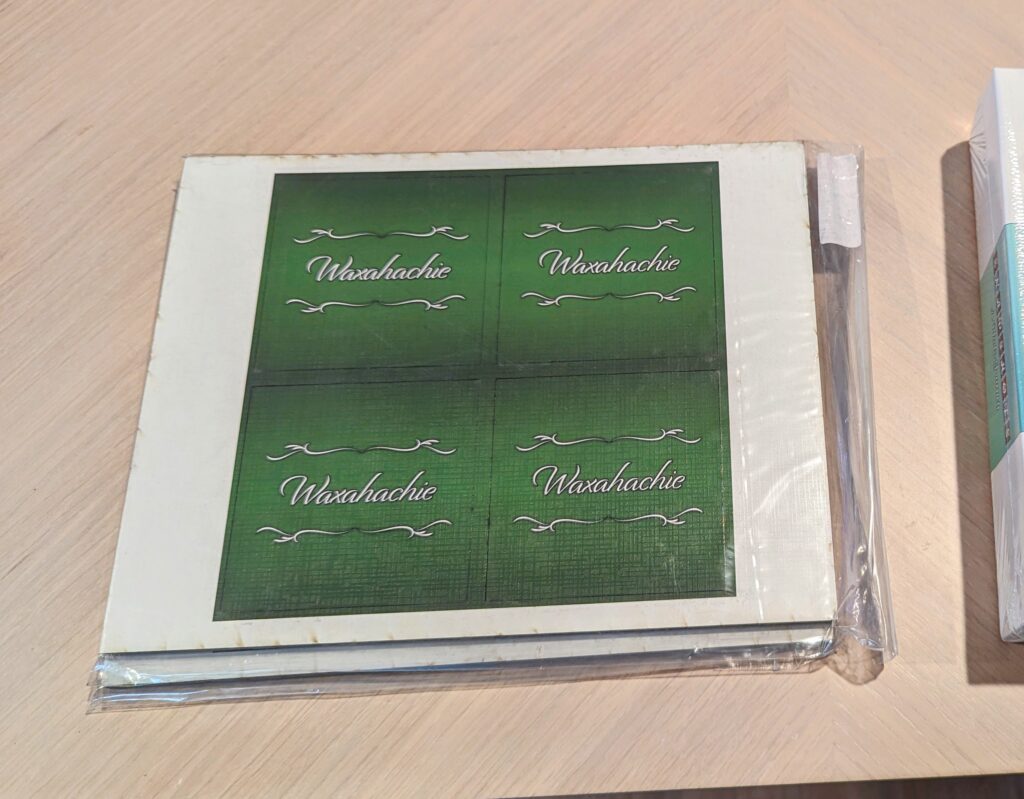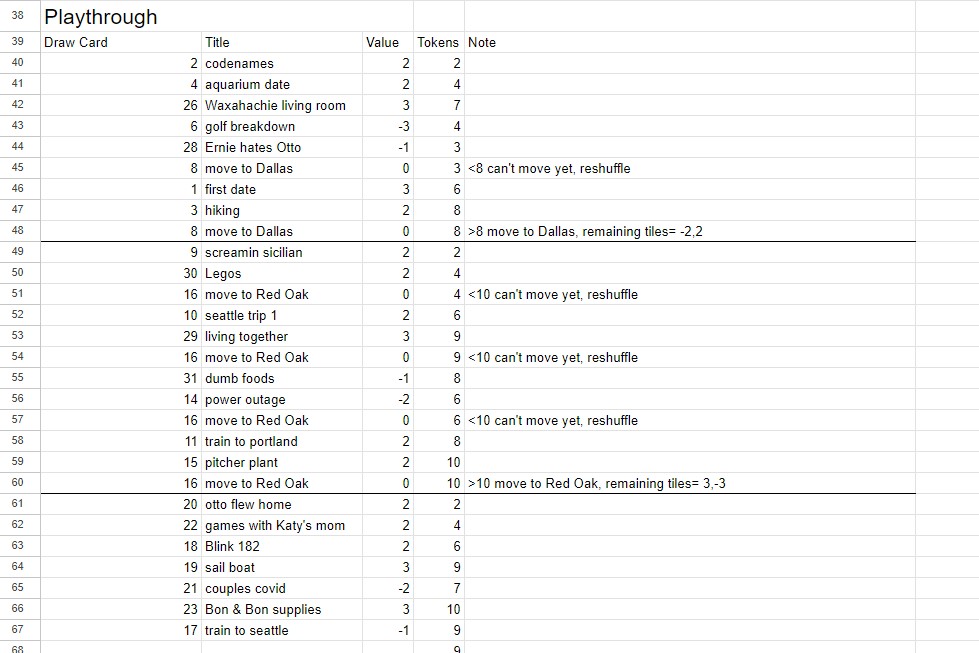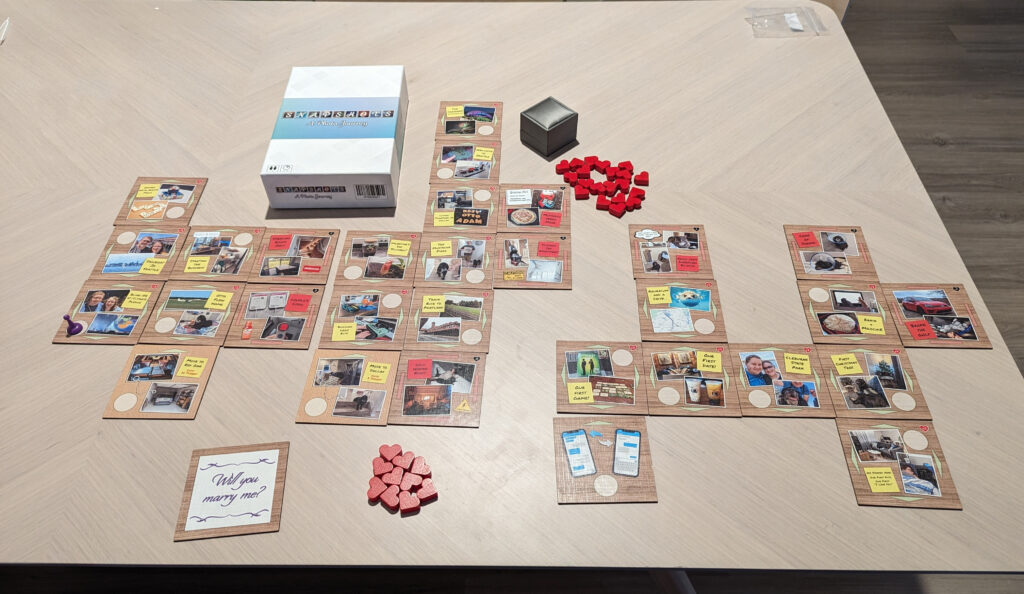When I started thinking about making a board game to propose to Katy, my original idea was something reminiscent of “The Game of Life”, with a set path and spaces dedicated to our memories. I even sketched a mock-up in OneNote, but it soon became evident that a fixed path, already laid out with our memory-images, felt too linear. I wanted it to unfold more like real life.

As corny as it sounds, I started to realize it wasn’t the path itself that was important but the memories and photographs. They were what would move the game forward so I shouldn’t lay them all out in front of us at the very start. Instead, I needed to let the game evolve just as our relationship had: spontaneously and unpredictably.
I ended up drawing inspiration from “Betrayal at House on the Hill” (super romantic, I know). However, instead of a pre-defined entrance hall, I started with two phones exchanging text messages – a nod to Katy and me meeting online. I replaced the haunted rooms with tiles showing specific memories, complete with photographs from the memories. And instead of a stack of tiles for each floor of the haunted house, I had three stacks, one for each location we’d lived at over the past couple of years.

Now to be upfront about it, the mechanics of “Snapshots” aren’t complicated. Players don’t go up against a scenario or hunt for items. Drawing a tile will earn heart tokens if it is a fond memory (with some more cherished memories being worth extra) or might cost tokens for not-so-great memories (like the evening we returned from a trip only to experience a power outage all night).
These negative memory tiles also add a twist: they block the path, making us change directions. The first two location stacks contained a ‘move’ card to transition to the next location, but to move, a set number of heart tokens was required. If Katy didn’t have enough tokens, the ‘move’ tile had to be shuffled back into that stack before carrying on with drawing memories.
I worked on the heart token values on the tiles in a spreadsheet doing virtual playthroughs to make sure no matter what happened, we could move forward. The way it ended up, you could finish the game without seeing all of the tiles depending on the luck of the draw.

I was okay with not seeing every card during a playthrough because I figured we could revisit the unrevealed tiles after the game. However, on the big night, we ended up seeing all of the tiles while playing.

And how did the game end? Though all tiles were shuffled in their own stacks, I ensured the “Will you marry me?” tile sat at the very bottom of the last stack, guaranteeing its place as the grand finale.